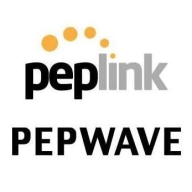


Aruba EdgeConnect SD-WAN Platform and Peplink SpeedFusion offer versatile solutions for network management, with each excelling in different areas based on user reviews. While Aruba is praised for its robust feature set and integration capabilities, Peplink is noted for its simplicity and affordability.
Features: Aruba EdgeConnect SD-WAN Platform users value its advanced traffic steering, security features, and integration with cloud providers. Peplink SpeedFusion users highlight its seamless failover capabilities, multi-WAN support, and ease of configuration. The critical difference lies in Aruba's extensive security and integration options, while Peplink excels in simplicity and reliability for multi-WAN scenarios.
Room for Improvement: Users of Aruba EdgeConnect SD-WAN Platform see room for enhancement in terms of complexity and learning curve for new users. Peplink SpeedFusion users suggest improvements in reporting capabilities and more advanced configuration options. While Aruba requires a steeper learning curve, users find Peplink needs better reporting functionalities.
Ease of Deployment and Customer Service: Deployment of Aruba EdgeConnect is viewed as more complex, demanding detailed planning and integration efforts. However, its customer service is praised for being responsive and helpful. Peplink SpeedFusion stands out for its straightforward deployment and intuitive setup but receives mixed reviews on customer service efficiency. Thus, Aruba leads in support, while Peplink wins in deployment simplicity.
Pricing and ROI: Aruba EdgeConnect users report higher setup costs but note a strong ROI due to its extensive features and support. Peplink SpeedFusion is recognized for its affordable setup costs and good ROI, particularly where budget constraints are present. Peplink emerges as the more cost-effective solution initially, while Aruba impresses with long-term value.
Clients are now comfortable and not wasting productive hours on IT support.
We have experienced a positive return on investment by utilizing Fortinet's products.
There's definitely an ROI. Having a centralized way of managing and applying policies across the entire organization always helps.
He explained that it required a command line configuration, as it couldn't be done through the graphical user interface.
I would rate their support for FortiGate a nine out of ten.
They offer very accurate solutions.
Aruba's technical support is very responsive.
I can harness the power of the teacher model without lowering my top and laser focus.
They scale up really well from smaller models like the FortiGate 40 and 50 to bigger sites with the FortiGate 100 for more throughput - up to enterprise datacenters.
The variation comes in terms of the interfaces and throughputs, but from a security perspective, you get the same benefit, irrespective of whether you have an entry-level unit or an enterprise.
You can choose a cheaper model if you only have 20-30 users, but you will need to spend more money for a FortiGate solution that covers 5,000.
Improper handling of these can lead to a memory surge, a well-known bug that can cause the entire system to freeze.
It is less stable than Palo Alto Networks and Check Point firewalls because there are lots of bugs in the latest firmware.
We have not had any problems with the operating systems or maintenance of subscriptions.
It is very stable, with no significant issues.
If I have put 10 GBPS of throughput on a firewall and I enable all of these features available, such as IPS or UTM functionalities, the throughput comes down to 1 GBPS.
By providing an integrated solution, users would have access to all features and functionalities within a single window, eliminating the need to navigate through multiple windows.
Investing in a solution that can accommodate such growth would be more cost-effective than repeatedly purchasing new hardware.
I would also like the management of EdgeConnect appliances to be incorporated into Aruba Central Cloud Central.
The security could also improve.
Secure SD-WAN is free of charge.
The most expensive part is the renewal of the license subscription.
FortiGate is priced lower than Palo Alto.
The licensing is not too expensive, however, it is also not cheap.
It is an affordable product and yet still a bit expensive.
The firewall, IPS, and VPN functions are the most valuable features.
FortiGate provides solid protection against viruses, malware, and other threats.
Within the same dashboard, you get to see the security profiles, the type of traffic that's passing through, the top applications that are being consumed, etc.
Additionally, it integrates perfectly with Aruba ClearPass, offering a robust security solution, covering network admin, access control, authentication, and authorization.
Many features are valuable for automation, connectivity, and throughput.



Fortinet FortiGate offers comprehensive network security and firewall protection across multiple locations. It effectively manages data traffic and secures environments with features like VPN, intrusion prevention, and UTM controls.
Organizations rely on Fortinet FortiGate for its robust integration with advanced security policies, ensuring significant protection for enterprises, cloud environments, and educational sectors. It facilitates network segmentation, application-level security, and authentication management, securing communication within and between locations such as branches and data centers. Its efficient SD-WAN and UTM features enable streamlined data management and enhanced threat protection capabilities. Users appreciate its centralized management, facilitating seamless operations across diverse environments.
What are the key features of Fortinet FortiGate?
What benefits should users expect from Fortinet FortiGate?
Fortinet FortiGate is crucial in sectors like education, offering robust networks for secure data flow between campuses and facilitating remote learning. In enterprise environments, it allows efficient management of application traffic and security across multiple branches, while in the cloud, it seamlessly integrates with diverse platforms to enhance security infrastructure.
The EdgeConnect SD-WAN platform secures and powers a self-driving wide area network for cloud-first enterprises.
In today’s edge-to-cloud enterprise, user experience and security are not optional
Aruba EdgeConnect SD-WAN provides a secure network foundation for Zero Trust and SASE. It includes a first-class SD-WAN paired with a next-generation firewall delivering unmatched quality of experience and advanced security.
Best-of-breed SASE with no compromise
EdgeConnect SD-WAN enables a best-of-breed SASE architecture that meets the security requirements of today’s digital organizations. It provides comprehensive SD-WAN and security services including next-generation firewall, fine-grained segmentation, IDS/IPS, and tightly integrates with many SSE (Security Service Edge) solutions.
Peplink’s patent-pending SpeedFusion technology powers enterprise VPNs that tap into the bandwidth of up to 13 low-cost cable, DSL, 3G/4G/LTE, and other links connected anywhere on your corporate or institutional WAN. Whether you’re transferring a few documents or driving realtime POS data, video feeds, and VoIP conversations, SpeedFusion pumps all your data down a single fat datapipe that’s budget-friendly, ultra-fast, and easily configurable to suit any networking environment.
We monitor all Software Defined WAN (SD-WAN) Solutions reviews to prevent fraudulent reviews and keep review quality high. We do not post reviews by company employees or direct competitors. We validate each review for authenticity via cross-reference with LinkedIn, and personal follow-up with the reviewer when necessary.